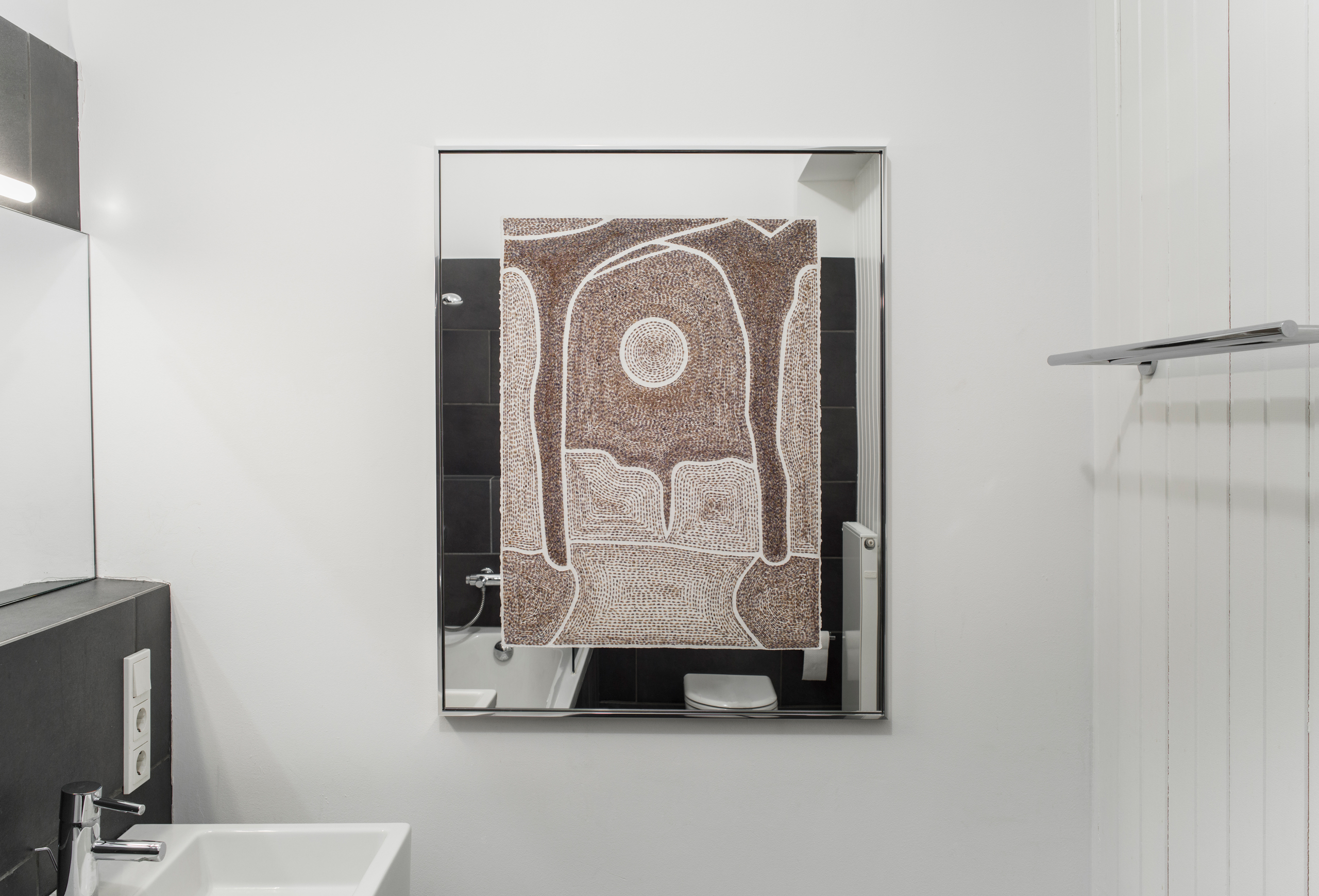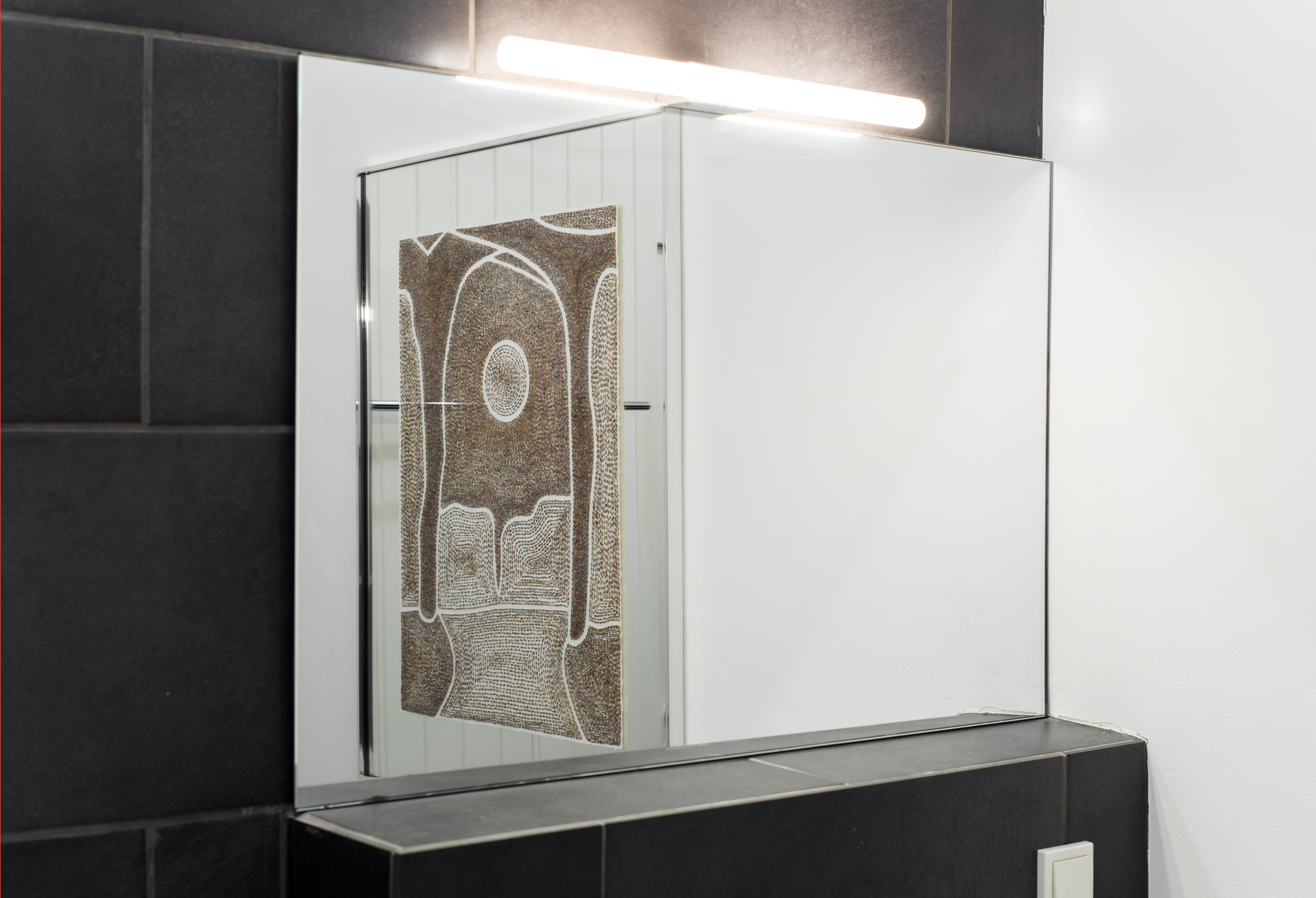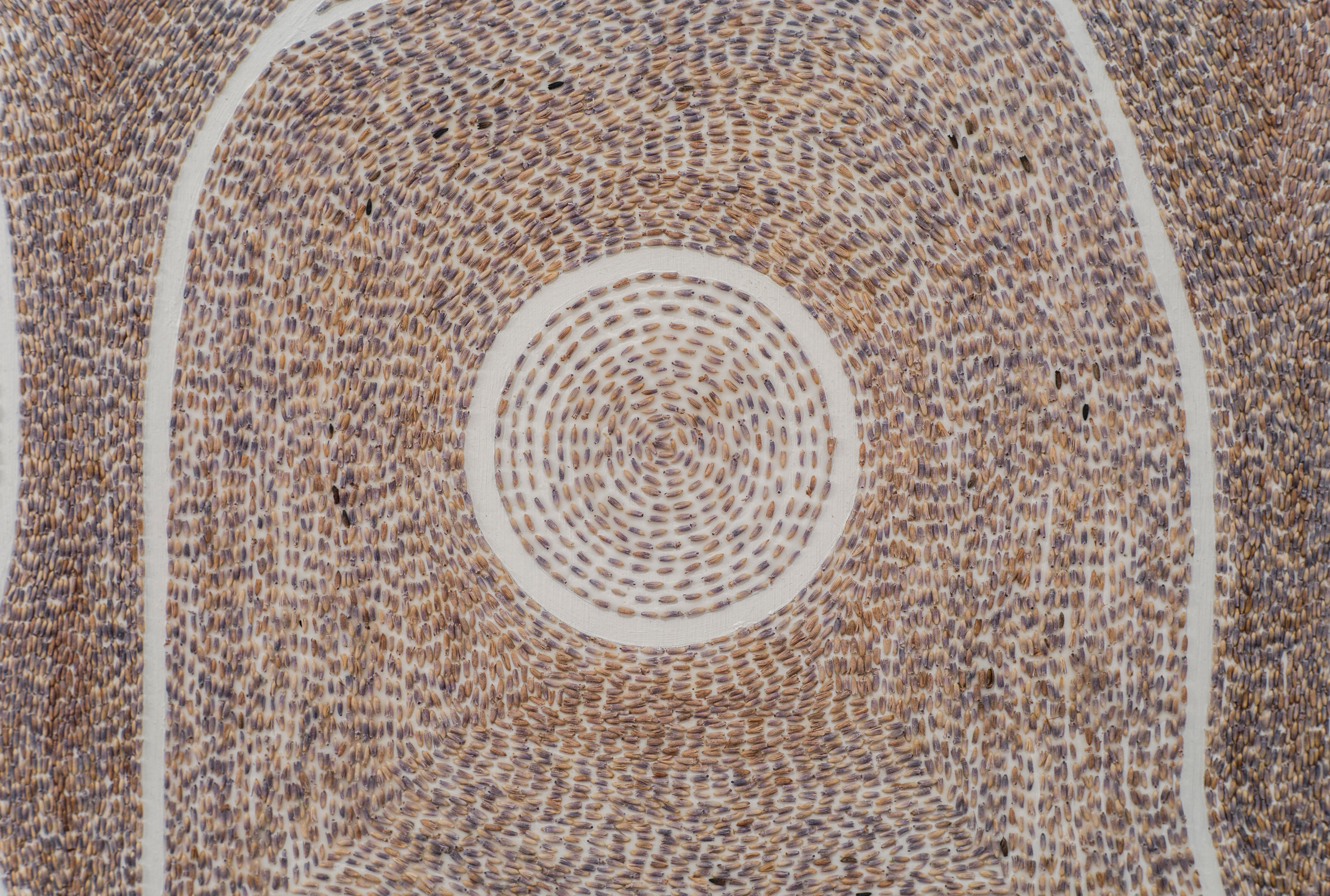Luisa Schlotterbeck: Do you have a morning routine?
Tessa Perutz: I like to wake up, make coffee, and do web-related work for an hour or two, checking email and such. Then it’s out of the way and I can paint or work with my hands and open mind for the rest of the day. If there is sun, I’m outside for a bit absorbing the energie of the Karma Solaire.
What do you think about an online project space?
In our current state of the world it feels important to pose the questions – what are the alternatives for hosting exhibitions ? How do we gracefully extend art-viewing experiences to those who cannot be present ? How do we adapt and emerge stronger in our expressions ?
I am especially pleased with this project because the mirror piece was physically hung in the space, then integrated onto an online platform. So there’s an inter-fusion between traditional and more contemporary exhibition approaches. It works actively to challenge our preconceived notions of presenting art – I love this level of creative curiosity and exploration.
What do you love about art and what do you hate?
I love the honesty and the invocation of vulnerability. Making art challenges all participants to confront their own sensitivity – in this I believe it is therapeutic.
What I do not like is this overly critical nature, this attitude that art-makers need to be in a constant cycle of judging others. I think that there is enough room for all to exist in their own spheres of creation and expression. I am on the side of inclusivity and practical compassion.
Coming from a painterly approach, how did you come up with that mirror?
What prompted my exploration into mirrors was my interest in the self-portrait, the inquisition into the depiction of self. But in wanting to get away from figurative representation. Opening a space for the self-portrait to be occupied not only by myself, the artist, but anyone who wants to interact with the artwork.
So there’s also this question of plurality – in creating a piece which extends beyond itself in generating infinite unique experiences, morphing the context for the artwork with each individual viewer and visit.
Would you say to use a mirror is always a reference to painting or a painterly discourse?
I’d say yes, absolutely, in relation to optics – on how Rembrandt had mastered mirrors in reproducing self-portraits and other subjects. But my interest perhaps derives in self-analysis, or psychotherapy, more precisely. The act of speaking, writing, producing artworks to explore the inner self while learning and healing the mind and body.
You meticulously lay out individual lavender blossoms in flowing patterns and strips. Can you tell me more about it?
My studio functions both as a painter’s sanctuary and laboratory – a place to explore image making with a variety of methodologies that have alternate speeds and rhythms to oil painting. It is a practice in decompressing and expanding time, moving through these non-traditional processes, laying lavender flowers, sewing hand-made ceramic beads onto textiles, always investigating how to integrate holistic and herbal elements into a more conventional painter’s practice.
It is quite the opposite to plein air painting, which I do often outdoors in nature.
Do you have any nice memories connected to bathrooms?
I’d say the bathtub is the best place to fall in love.





